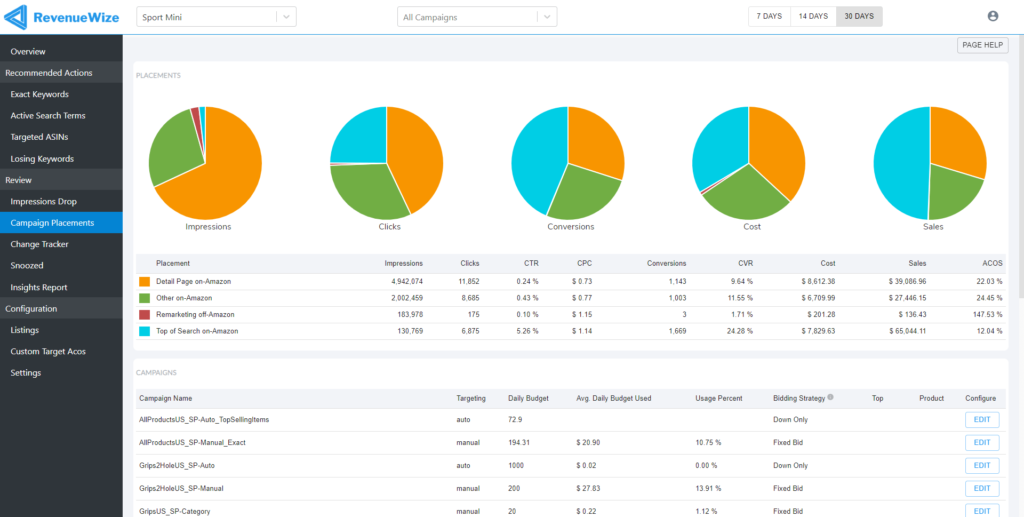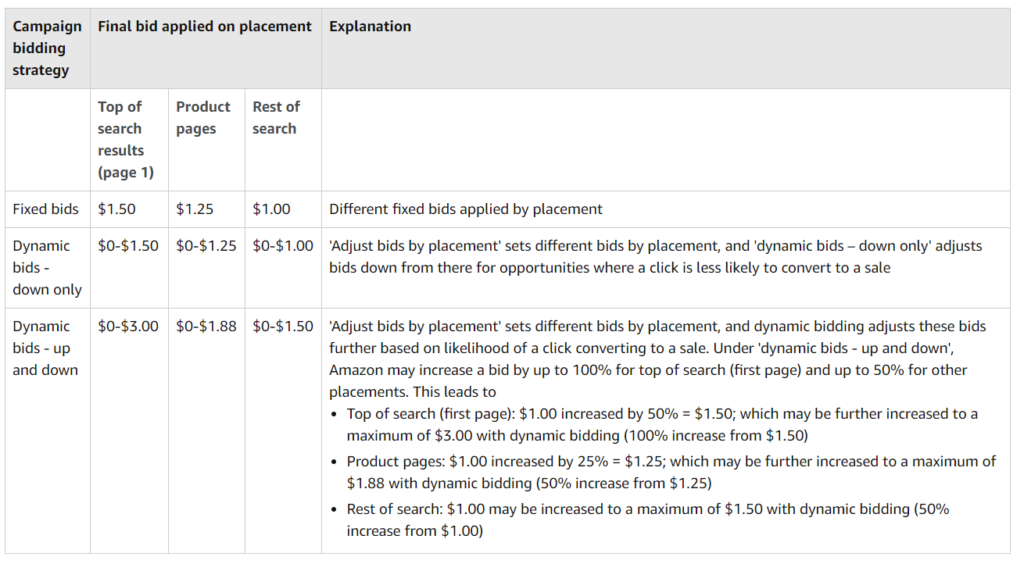🚀 Get Amazon reviews. Free!
Learn more about how to manage the Campaign Placement option on RevenueWize to improve your biding strategy and reduce your ACOS.
The Campaign Placements Menu allows us to see how the ads are performing based on their location in Amazon. We can differentiate our bids and view performance of our sponsored product ads by several placement groups:

Campaign Settings
Clicking on the “Edit” option next to each campaign allows us to configure the campaign settings

Campaign settings include:
Configuring your Bid Strategy
We can choose from three bidding strategies. Pick the strategy that works best for your campaign’s objective. This setting applies to all bids within your campaign.
Dynamic bids – down only
When we choose the dynamic bids – down only strategy, Amazon will reduce our bids in real time for clicks that may be less likely to convert to a sale. If Amazon sees an opportunity where it predicts our ad may be less likely to convert to a sale (for example, a less relevant search query, on a placement that does not perform well, etc.), it might lower your bid for that auction.
Dynamic bids – up and down
When we choose the dynamic bids – up and down’ strategy, Amazon will increase the bids in real time for clicks that may be more likely to convert to a sale, and reduce them for clicks that are less likely to convert to a sale. Our bids will not increase by more than 100% for placements at the top of the first page of search results, and by more than 50% for all other placements. Since this strategy adjusts our bid up and down in proportion to likelihood of a conversion, it may deliver more conversions for our ad spend compared to the other two strategies.
If Amazon finds an opportunity where your ad is more likely to convert to a sale (for example, your ad appearing for a highly relevant search query, on a placement that performs well, etc.), we might increase your bid for that auction. If we find another opportunity that looks less likely to convert to a sale, we might lower your bid for that auction. For example, Amazon can currently adjust your bid of $1.00 up to a maximum of $2.00 for opportunities on top of the first page of search results, and up to $1.50 for opportunities on all other placements.
Fixed bids
When we choose the fixed bids strategy, Amazon will use our exact bid for all opportunities and will not adjust our bids based on likelihood of a conversion. Compared to dynamic bidding strategies, we may get more impressions, but fewer conversions for our ad spend with this strategy.
Adjusting bids by placement
We can enter a percent increase to our base bid for two placements: top of search (first page) and product pages. If we choose to set bids by placement, bids will be increased by the specified amounts when our ads compete for opportunities on those placements.
Our base bid will apply to the “rest of search” placement group. We can enter up to a 900% increase (10x) to our base bid. Adjust bids by placement works together with the selected bidding strategy to determine the final bid applied.
For example, if we bid $1.00 for a keyword and set a 50% and 25% adjustment for ‘top of search (first page)’ and ‘product pages’ placements respectively, then this is how our bids will be applied, depending on the campaigns bidding strategy.

Different placement groups may have different performance (click through and conversion rates) due to their locations on Amazon. If our objective is sales, we should consider using the strategy dynamic bids – up and down – this strategy will try to maximize conversions from all placements at a similar ACOS across them. If our objective is not purely short-term sales, we can use the “adjust bids by placement” settings to shift our ad impressions to a particular placement.